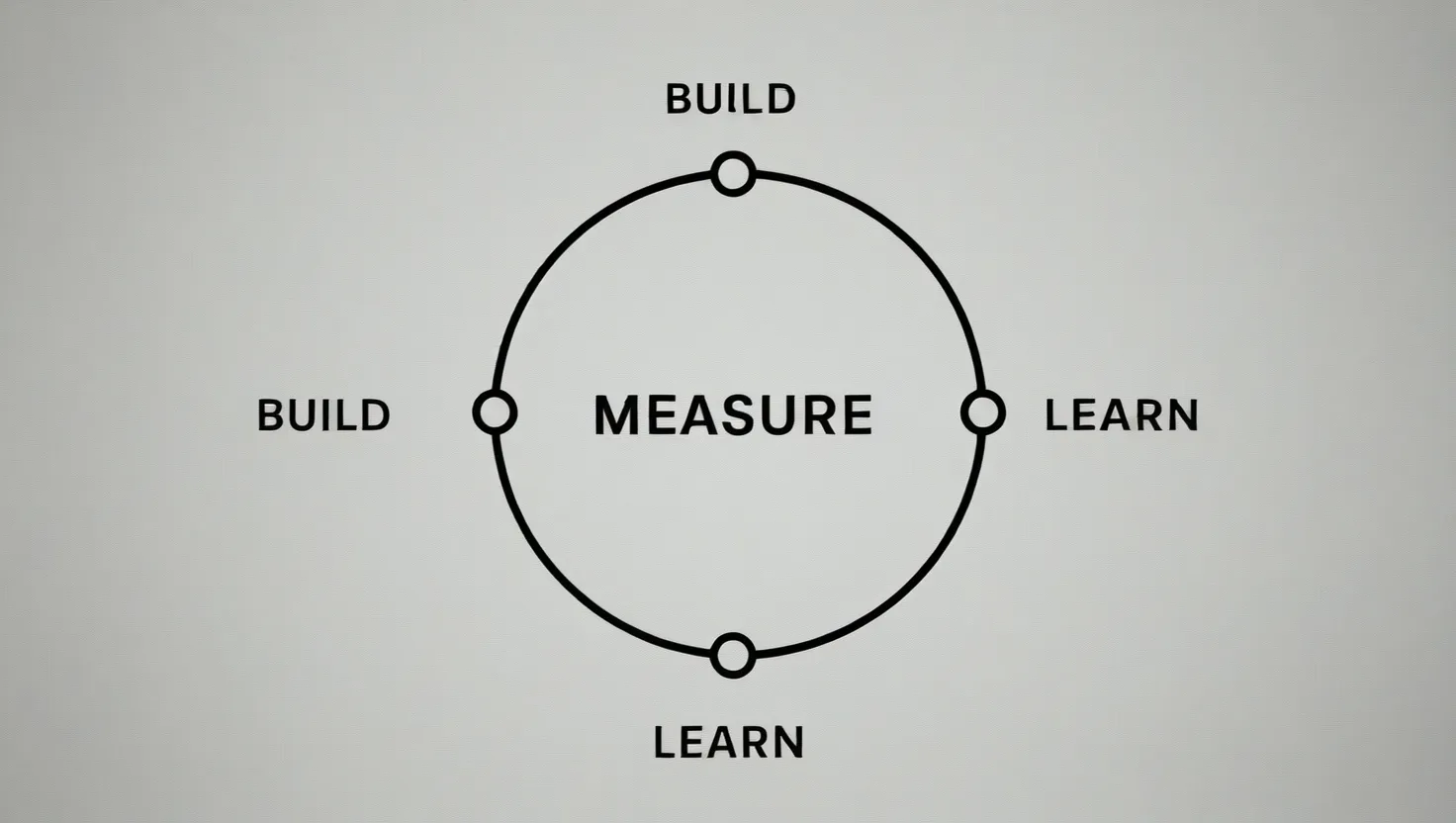When I first delved into the world of entrepreneurship, I was met with a myriad of strategies and methodologies, each promising to be the key to success. However, one approach that stood out for its simplicity, effectiveness, and adaptability was the Lean Startup methodology, as outlined by Eric Ries in his seminal book, “The Lean Startup.”
At the heart of the Lean Startup is the Build-Measure-Learn loop, a feedback cycle that accelerates the product development process. This loop is more than just a series of steps; it’s a mindset that encourages rapid experimentation and continuous improvement. As Ries puts it, “The only way to win is to learn faster than anyone else.”
The Build Phase
Imagine you have an idea for a new product or service. The traditional approach would involve spending months, if not years, perfecting every detail before launching. But in the Lean Startup world, you start by building a Minimum Viable Product (MVP). This is a stripped-down version of your product that includes just enough features to test your core assumptions.
For instance, if you’re developing a new mobile app, your MVP might be a simple prototype that allows users to perform the most basic functions. The goal is not to create a perfect product but to gather feedback quickly and inexpensively.
The Measure Phase
Once your MVP is out in the wild, it’s time to measure its performance. This is where validated learning comes into play. Validated learning is about using real-world data to verify your business assumptions. Instead of relying on intuition or market research reports, you gather feedback directly from your users.
This phase is crucial because it helps you identify what works and what doesn’t. Are users engaging with your product as you expected? Are there features that are being ignored or misunderstood? The answers to these questions will guide your next steps.
The Learn Phase
The learn phase is where the magic happens. Based on the data you’ve collected, you iterate on your product. This might involve making significant changes or simply tweaking a few features. The key is to be agile and responsive to customer feedback.
As Steve Blank, a pioneer in the Lean Startup movement, once said, “A startup is a temporary organization designed to search for a repeatable and scalable business model.” This search is ongoing, and it’s through the build-measure-learn loop that you refine your business model continuously.
Innovation Accounting
Innovation accounting is another critical component of the Lean Startup methodology. It involves establishing metrics that reflect real customer engagement and value creation, rather than just traditional financial metrics.
Think about it: if you’re only measuring revenue and profit, you might miss out on crucial indicators of your product’s success. Innovation accounting helps you track progress in a way that’s meaningful for your startup. For example, you might measure user acquisition rates, retention rates, or the number of features adopted by users.
Pivot or Persevere
One of the most challenging decisions an entrepreneur faces is whether to pivot or persevere. Pivoting means changing direction based on customer feedback, while persevering means sticking to your original plan despite initial setbacks.
The Lean Startup approach encourages you to be flexible. If your data shows that your current path isn’t working, it’s okay to pivot. In fact, pivoting can often be a sign of strength rather than weakness. As Ries notes, “Pivots are a natural consequence of iteration powered by a good feedback loop.”
Continuous Deployment
Finally, there’s the concept of continuous deployment. This involves frequently releasing small updates to your product to improve it incrementally. Instead of waiting for months to release a major update, you make small changes regularly.
This approach not only keeps your product fresh and relevant but also allows you to respond quickly to customer needs. It’s a way of showing your users that you’re committed to continuous improvement and that their feedback matters.
Applying Lean Startup Strategies
So, how do you apply these strategies in practice? Here’s a real-world example:
Imagine you’re starting a new e-commerce platform. You begin by developing an MVP that allows users to browse and purchase a limited selection of products. You launch this MVP quickly, gather feedback from your early adopters, and then iterate based on what you learn.
As you collect data, you set clear success metrics using innovation accounting. You track user engagement, purchase rates, and customer satisfaction. If the data shows that users are struggling with the checkout process, you pivot by simplifying the checkout flow.
Throughout this process, you continuously deploy small updates to improve the user experience. You might add new payment options, enhance product descriptions, or improve search functionality.
The Power of Lean Startup
The Lean Startup methodology is not just a set of strategies; it’s a way of thinking. It encourages you to be experimental, adaptable, and customer-focused. By adopting this approach, you can reduce the risk associated with launching a new business, optimize your resources, and increase your chances of success.
As Marc Andreessen, co-founder of Andreessen Horowitz, once said, “The best way to get started is to quit talking and begin doing.” The Lean Startup is all about taking action, learning from your mistakes, and continuously improving.
So, the next time you’re faced with the daunting task of launching a new venture, remember the build-measure-learn loop, validated learning, innovation accounting, the willingness to pivot, and the importance of continuous deployment. These strategies can be your guiding light in the often uncertain world of entrepreneurship.
Questions to Ponder
- How can you apply the build-measure-learn loop to your current project?
- What assumptions are you making about your business, and how can you test them?
- How do you currently measure success in your business, and are there other metrics you should be tracking?
- When was the last time you pivoted in response to customer feedback, and what did you learn from the experience?
- How often do you release updates to your product, and what impact has this had on user engagement?
By reflecting on these questions and integrating the Lean Startup strategies into your entrepreneurial journey, you’ll be better equipped to navigate the challenges of building and growing a successful business.





